As mentioned in the previous entry in this series, we’re ranking the top-20 players at each position in the NHL.
Ranking the best players in the NHL is an arduous task, not something I believe anyone can do alone, and certainly not without the aide of statistical analysis. I decided to split statistics into three categories for skaters: offensive play, defensive play, and transition play. The weights given to each category out of a possible total of 100 points vary by position, and I asked for help in deciding upon those weights from Sportsnet contributors Jonathan Willis and Steve Burtch, along with The Hockey News writer Dom Luszczyszyn. With their insight, I arrived at weights for the right wing position of 55 for offence, 15 for defence, and 30 for transition play.
Within each category, statistics were also weighted based on importance to their contribution, for example primary assists are weighted more heavily for centres than wingers. Points are then awarded on a basis of where each player lies between the best and worst player at their position. Statistics were collected from Sportlogiq, Corsica.hockey, and stats.hockeyanalysis.com for this project.
Where available, a three-year sample is used, and the minimum amount of ice time needed to be included was 2000 minutes at 5-vs-5. For the right wing position, the statistics used for each category were…
Offence: 5-vs-5 and power play goals/60, primary assists/60, secondary assists/60, shot attempts/60, scoring chances/60, scoring chance generating plays/60, relative team goals for/60.
Defence: 5-vs-5 and shorthanded loose puck recoveries, defensive plays (hits, stick-checks, pass blocks, and shot blocks), relative team shot attempts against/60, relative team goals against/60, quality of teammates, and quality of competition.
Transition: 5-vs-5 shot attempt differential, relative shot attempt differential, possession driving plays/60, controlled entry rate, controlled exit rate, completed passes/60, and pass success rate.
Before we get into it, I want to stress that the weightings of the statistics inside each category are my own, and as such, this list is by no means definitive.
20: T.J. Oshie | Offence: 28.72/55 | Defence: 7.95/15 | Transition: 17.67/30 | Total: 54.35/100
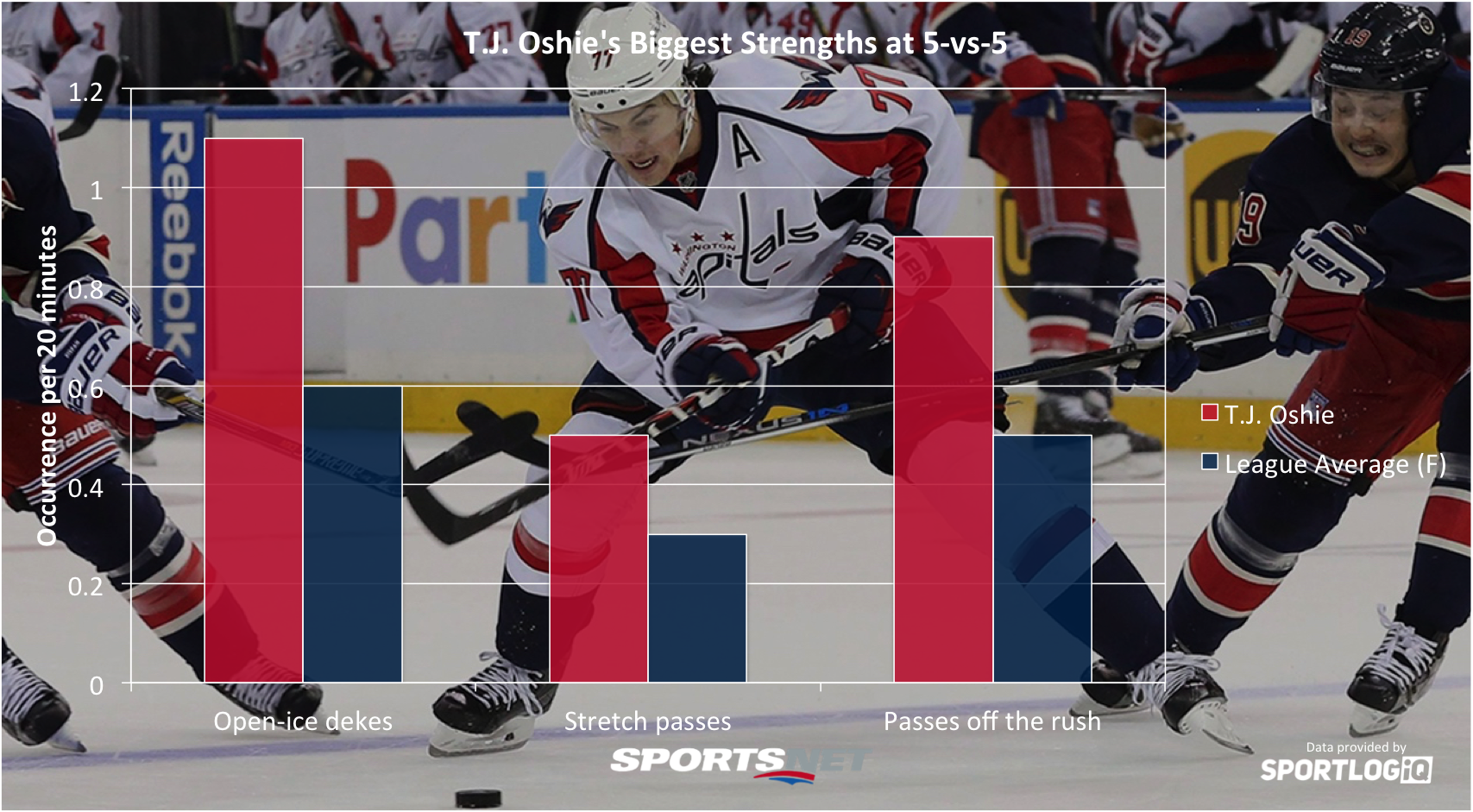
While Oshie is a solid all-around player, where he really stands out is in the fine skills categories, essentially; very rare events. Oshie loves to dangle, which anyone who has watched him once will notice, but he’s also a great playmaker. He finds his line mates with stretch passes out of the defensive zone and leads the rush in the offensive zone, setting up scoring chances with East-West movement regularly.
19: Kyle Okposo | Offence: 32.81/55 | Defence: 5.09/15 | Transition: 16.81/30 | Total: 54.71/100
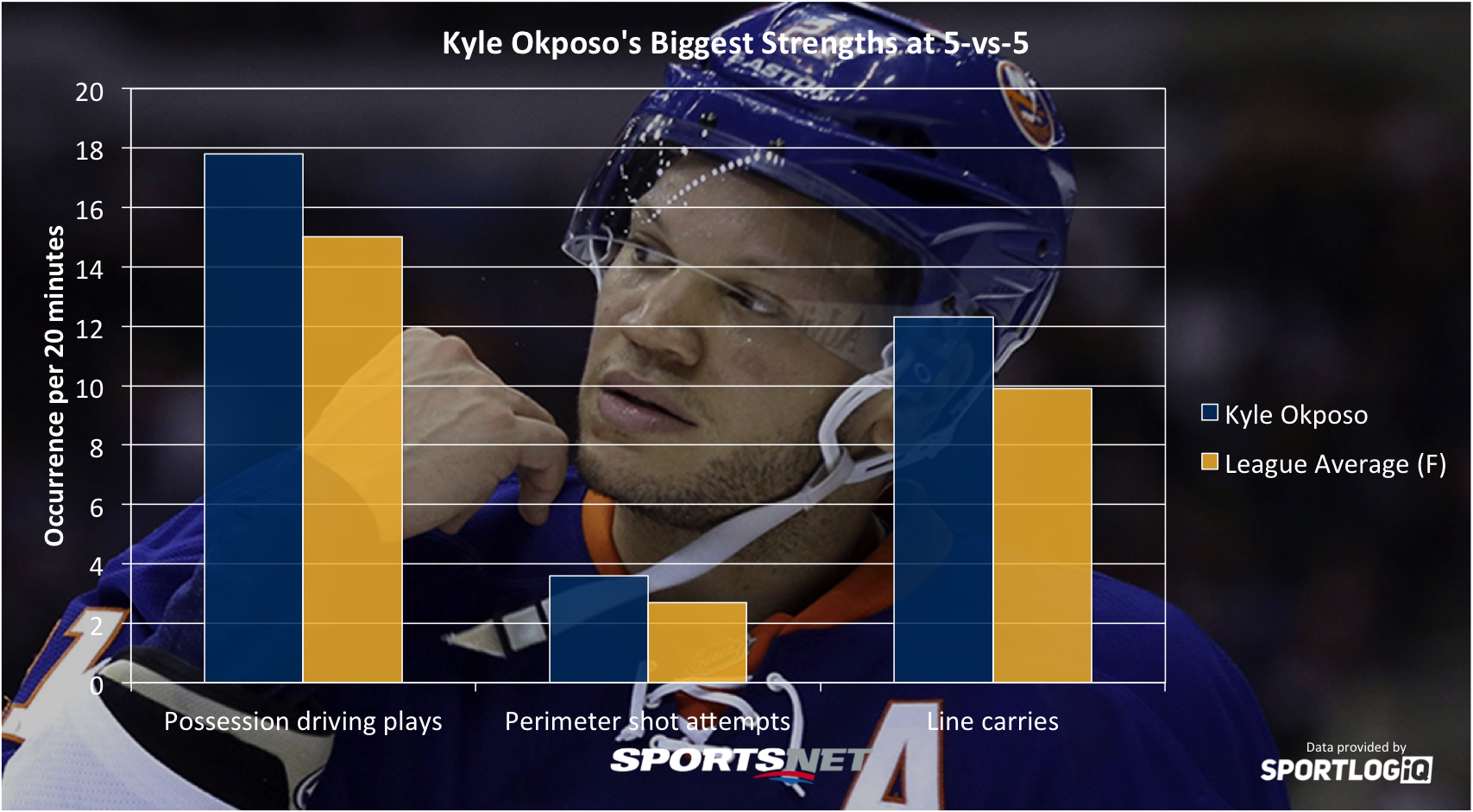
Not as well rounded as Oshie, Okposo is more of a brute force offensive player, which means that if he doesn’t have a clear lane to the net, he’s more than willing to shoot from the perimeter. He produces scoring chances at a solid clip as well and his ability to carry the puck up the ice is nothing to toss aside. Okposo is often criticized for not being as physical as his frame would suggest he should be, but his impact as a player is very much that of a prototypical power forward.
18: Jordan Eberle | Offence: 31.26/55 | Defence: 6.01/15 | Transition: 18.28/30 | Total: 55.55/100
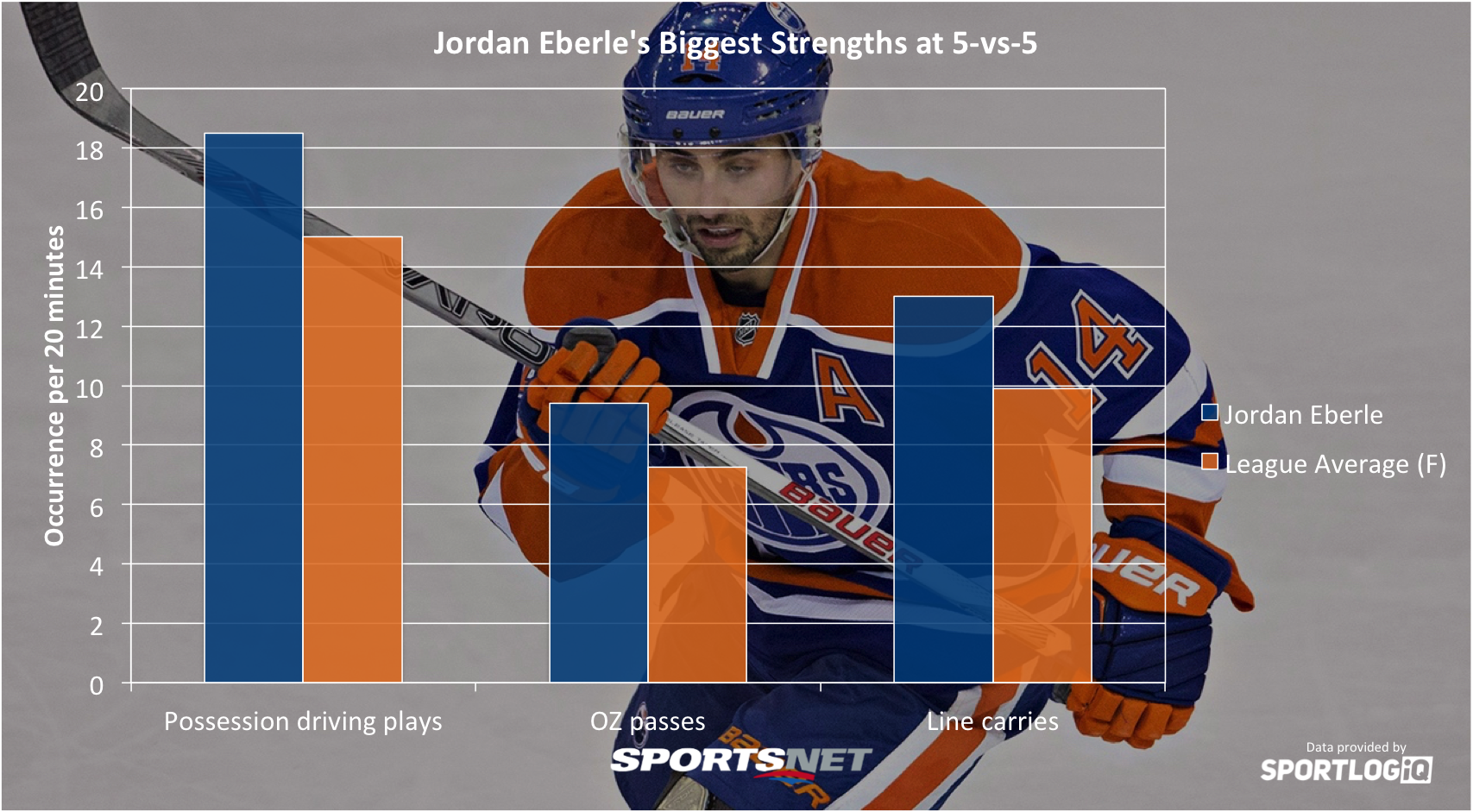
After back-to-back clutch performances at the world juniors, Eberle was among the NHL’s most overrated prospects. And though, for a while, he was an overrated player, the declining expectations have resulted in a very good player who is extremely underrated. Eberle is an accomplished offensive player, but he also stands out in transition as both an effective puck carrier and puck distributor. His defensive play isn’t great for a first liner, but there’s no denying he’s effective in all other areas.
17: Craig Smith | Offence: 31.35/55 | Defence: 5.99/15 | Transition: 18.87/30 | Total: 56.21/100
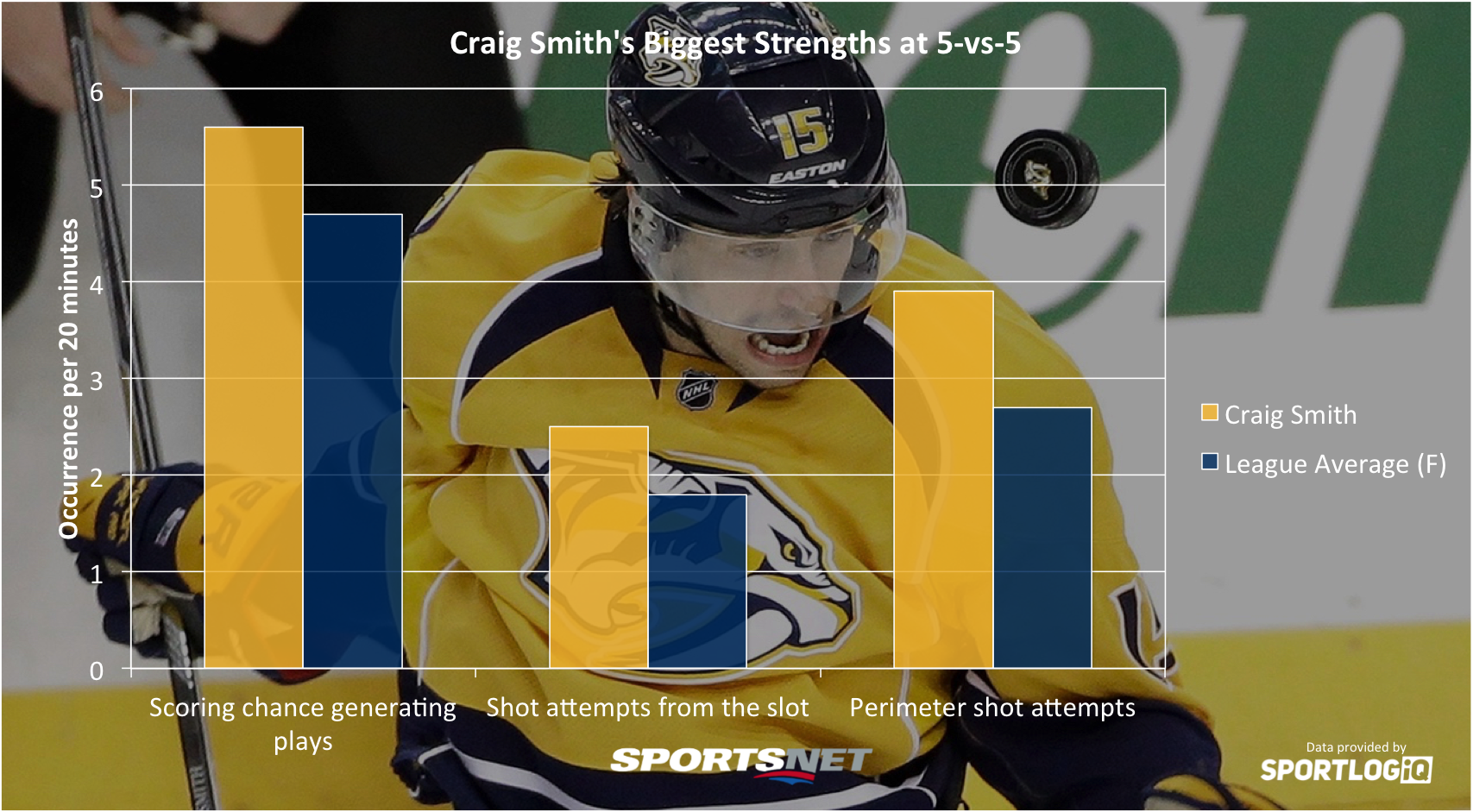
No one ever talks about Craig Smith. In fact, if you don’t watch much of the Central Division, you may not even know who he is. The three-time 20-goal scorer is an offensive-chance machine, among the elite in both producing individual scoring chances and creating them for teammates. But his biggest strength is shooting the puck. Smith is a player to watch over the next couple years as the Predators push for the Stanley Cup.
16: Justin Williams | Offence: 27.42/55 | Defence: 6.45/15 | Transition: 22.69/30 | Total: 56.56/100

Under-appreciated for a huge portion of his career, Williams is an elite possession driver. He does his best overall work in transition, preferring to pass the puck rather than carry it, but he’s also extremely effective in the offensive zone both as a forechecker and playmaker. Williams isn’t likely to be the driving offensive force on a line, but he is a perfect complementary player who can create more offensive zone time for his linemates.
15: Patric Hornqvist | Offence: 34.43/55 | Defence: 6.11/15 | Transition: 16.40/30 | Total: 56.95/100
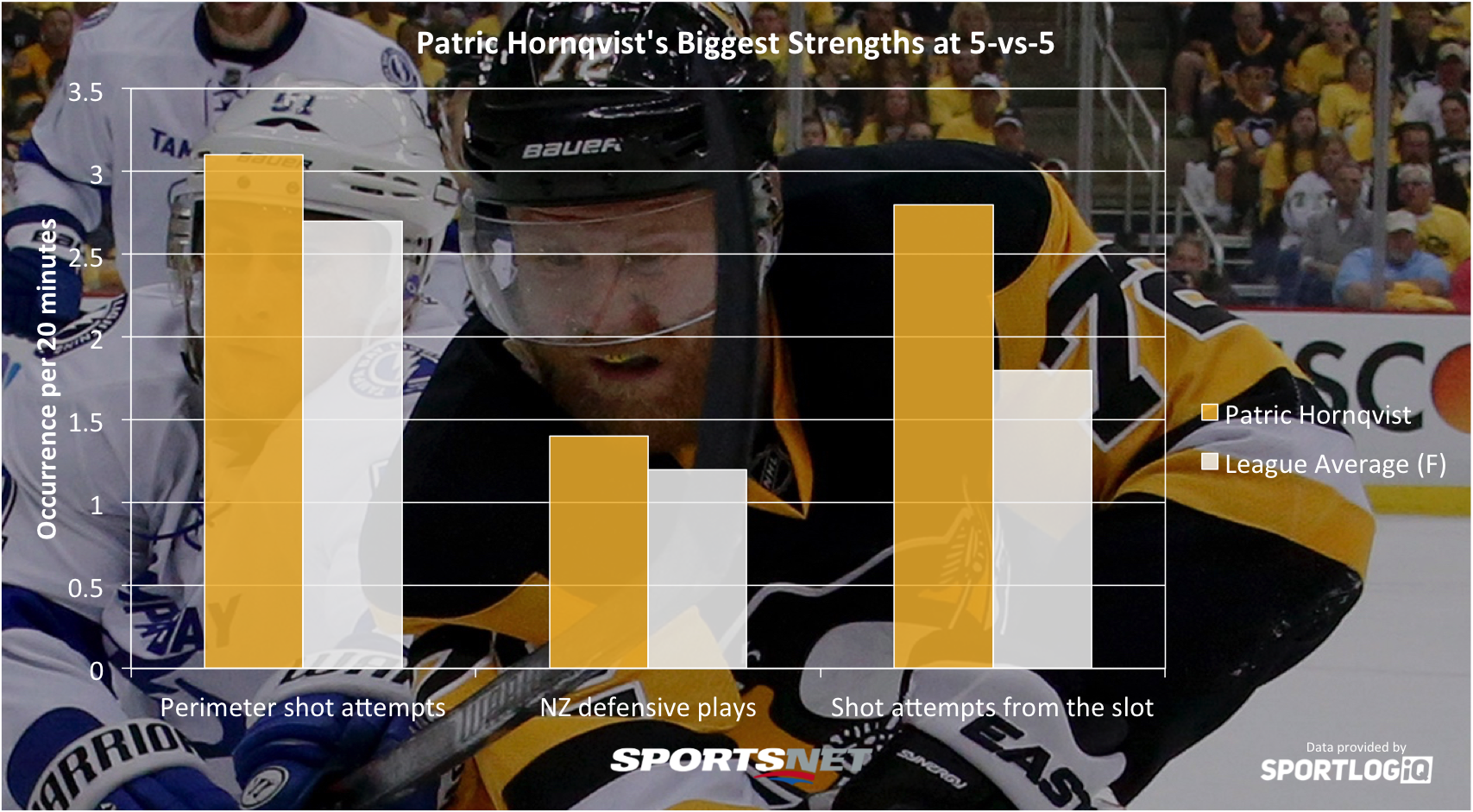
Hornqvist is one of those players where the eye test and analytics mesh really well. An elite-level triggerman, Hornqvist is tied for second among all right wingers in scoring chances at even strength, and when he can’t get to the slot, he’s not afraid to shoot from the outside and go after a rebound. While he’s not great defensively, one area Hornqvist does excel at away from the puck is in the neutral zone, where he’s great at picking off passes and winning puck battles.
14: Reilly Smith | Offence: 28.80/55 | Defence: 9.36/15 | Transition: 20.22/30 | Total: 58.37/100
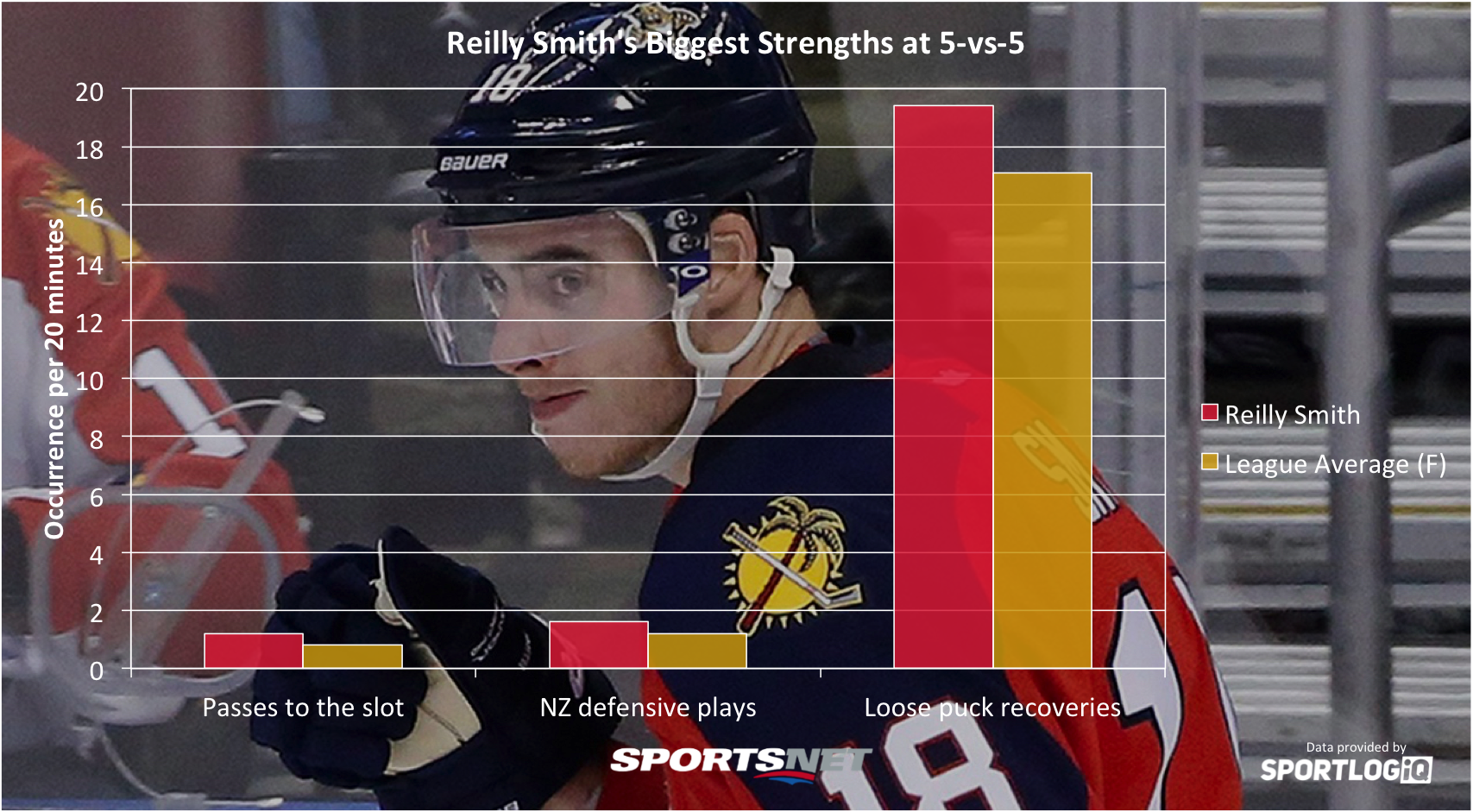
Though he’s received some great press recently, and had a strong first season in Florida, it’s a bit of a surprise to see Reilly Smith rank so high here. Breaking into the NHL on Patrice Bergeron’s wing likely helped Smith develop his game and he rates as the fourth-best defensive right winger in the game right now. He’s a strong transition player to boot. Only one of his peers recovers loose pucks at a higher rate, and Smith is adept at stripping opponents of the puck as well.
13: Corey Perry | Offence: 39.47/55 | Defence: 4.70/15 | Transition: 15.08/30 | Total: 59.25/100

Below average as a defensive and transition player, Perry ranks high because he’s the third-best offensive producer at his position. Perry can attack in a variety of ways, turning players inside-out with dekes, finding teammates to create rushes, or just being a hound in the slot with deflections, one-timers, or pouncing on rebounds. His ability to get the puck not only into the slot, but also within a few feet of the net, makes him an elite goal scorer.
12: Marian Hossa | Offence: 30.55/55 | Defence: 7.56/15 | Transition: 21.58/30 | Total: 59.69/100
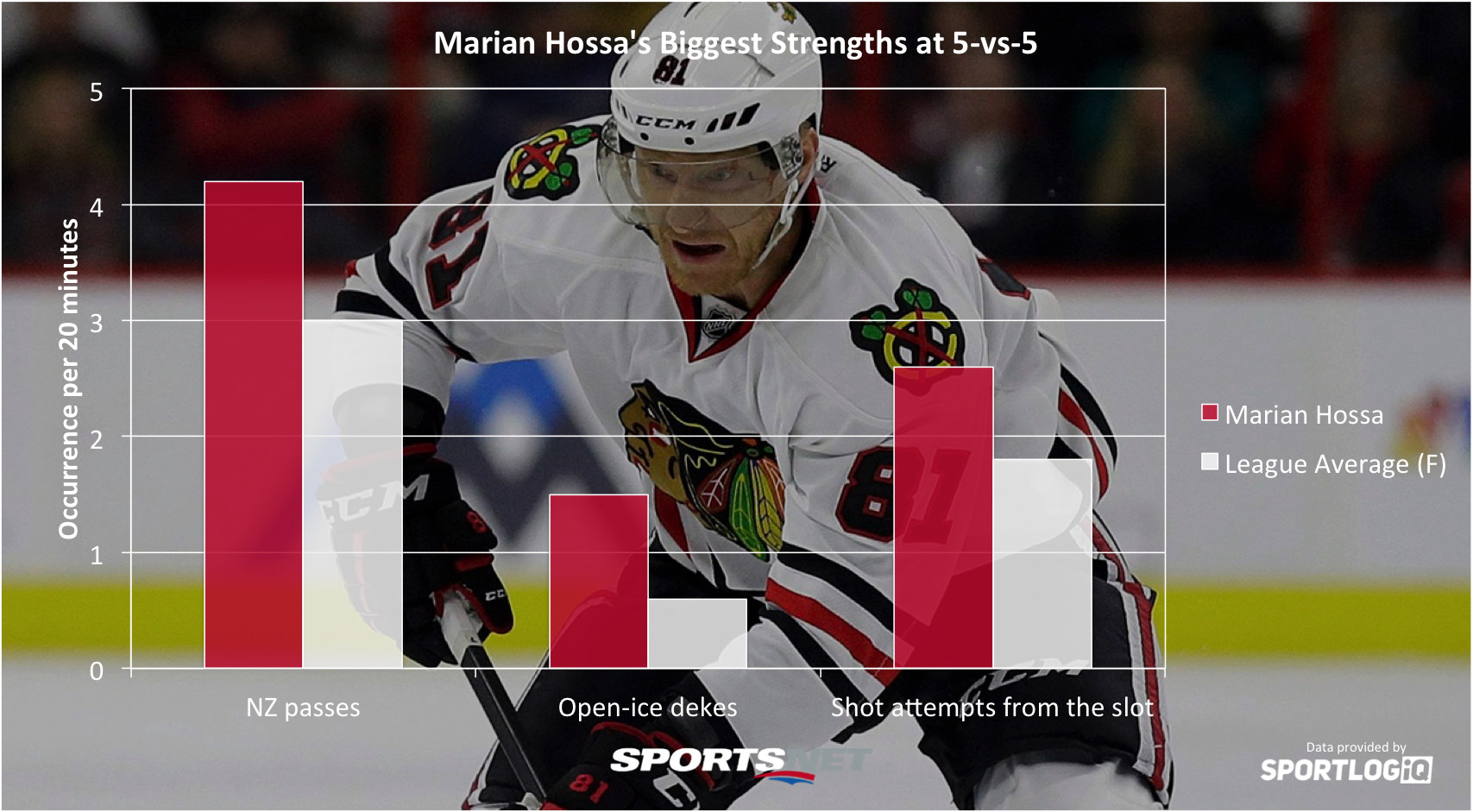
The goals may be beginning to dry up for the 37-year-old Hossa, but the offensive contribution hasn’t and his well-rounded play keeps him firmly among the top players at his position. Like teammate Jonathan Toews, Hossa excels in setting up his teammates in the neutral zone, an area the Blackhawks always dominate. Hossa’s stick-handling ability allows him to continue to be one of the NHL’s most effective one-on-one players, and though the goal production seems to be fading, Hossa gets a ton of scoring chances.
11: James Neal | Offence: 36.33/55 | Defence: 6.24/15 | Transition: 19.89/30 | Total: 62.47/100
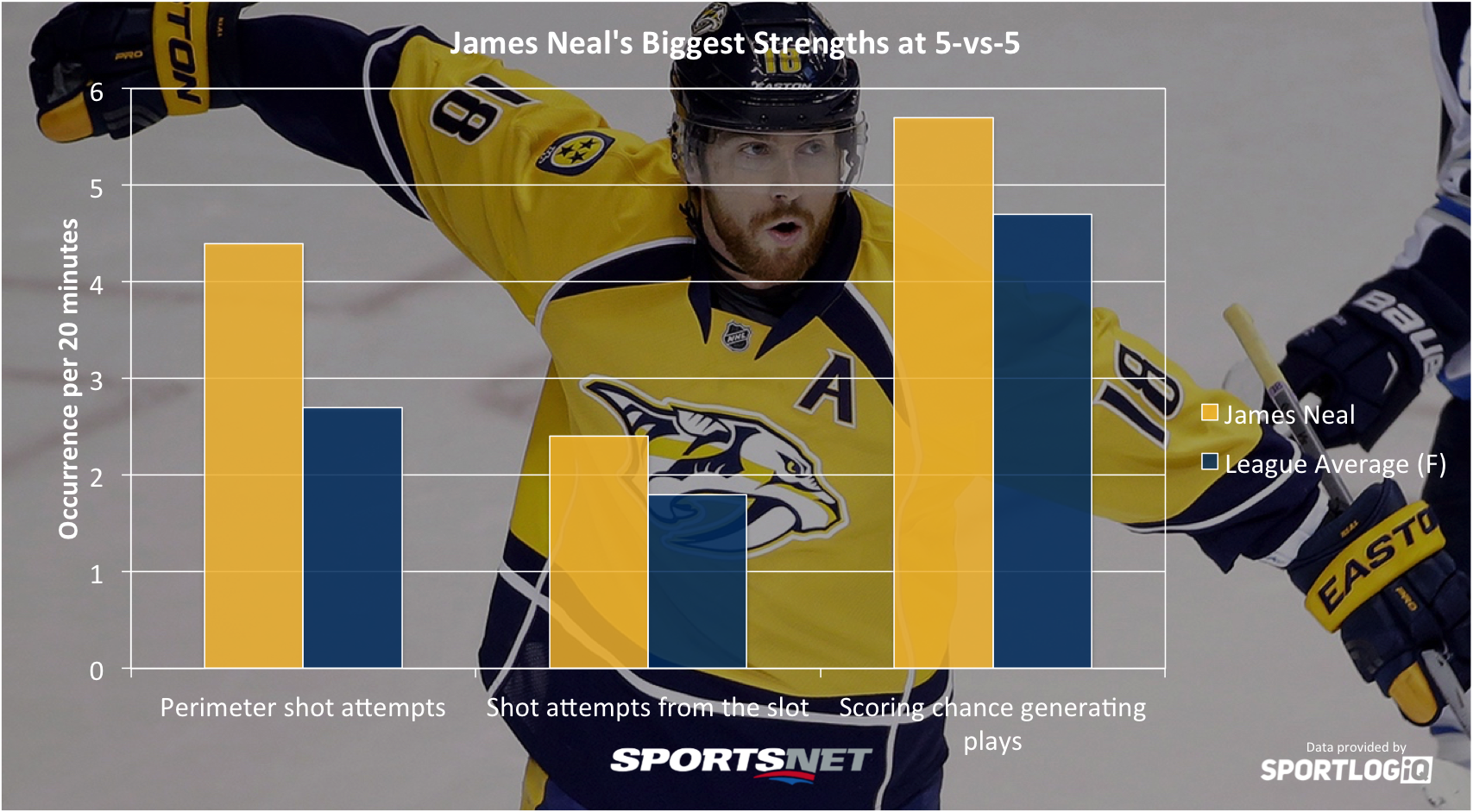
One of the NHL’s best snipers, it’s tempting to think Neal is all about his shot, but he’s much more well-rounded. His shot is easily his premier strength though, as he not only generates scoring chances at a good clip, but he’s one of the few players who can score from a distance with regularity. Neal is not a great puck carrier, but his passes find their mark at a high rate, and when he does carry the puck, he makes good decisions.
10: Jaromir Jagr | Offence: 32.16/55 | Defence: 7.82/15 | Transition: 23.82/30 | Total: 63.80/100
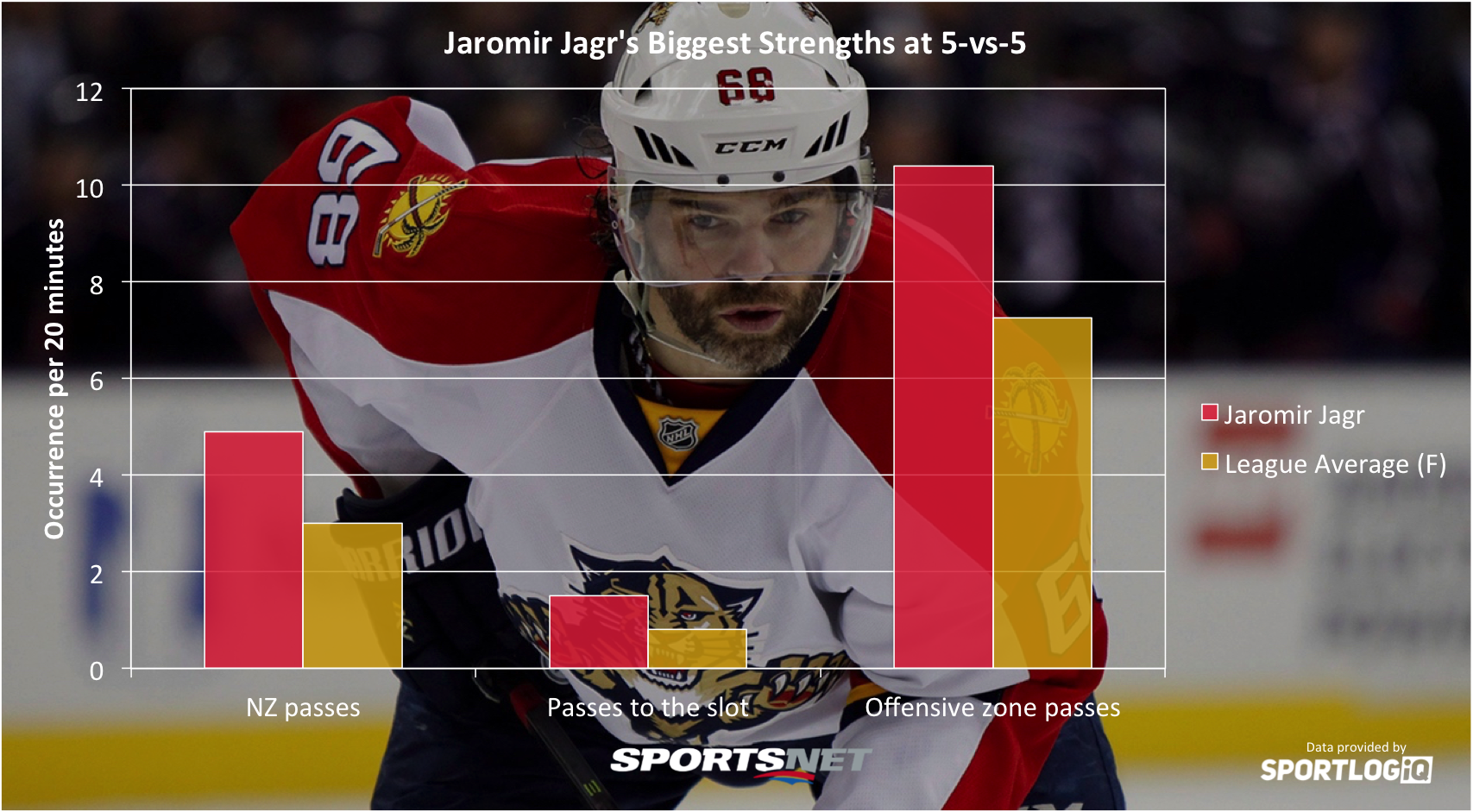
The ageless wonder, Jagr has managed to stay within the top 10 at his position in his mid-40’s, which is all kinds of incredible. Jagr has changed his game somewhat from his prime years, carrying the puck less and passing it more, but what sets him apart is how smart he is. He doesn’t ever relinquish the puck if he has another option, either finding teammates with passes, or using his large frame to protect the puck. His most standout skills happen to be in the offensive zone, but he’s also the third-best transition player in the NHL at his position.
9: Brendan Gallagher | Offence: 34.49/55 | Defence: 8.16/15 | Transition: 21.18/30 | Total: 63.83/100
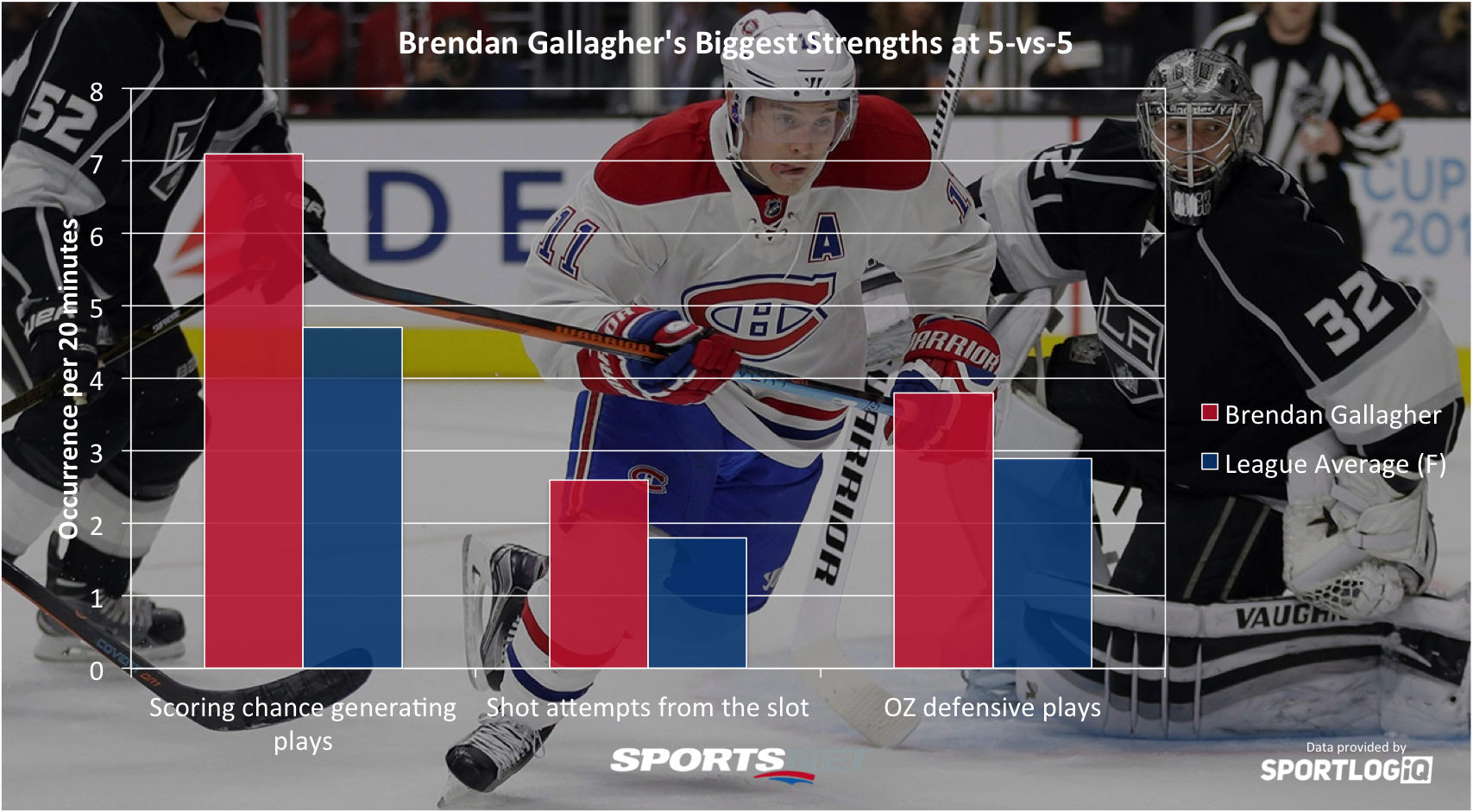
For whatever reason, Gallagher remains extremely underrated in NHL circles. A workhorse on the ice, Gallagher’s tenacity is a rare thing. He’s like a Tasmanian devil in the offensive zone, forechecking teams into submission, then setting up scoring chances either with short, quick passes that open up lanes, or getting into the slot for deflections and rebounds. Gallagher is also very strong defensively, which is surprising since he doesn’t get any shorthanded time and therefore got zeroes across the board there.
8: Mark Stone | Offence: 32.37/55 | Defence: 10.89/15 | Transition: 21.95/30 | Total: 65.21/100
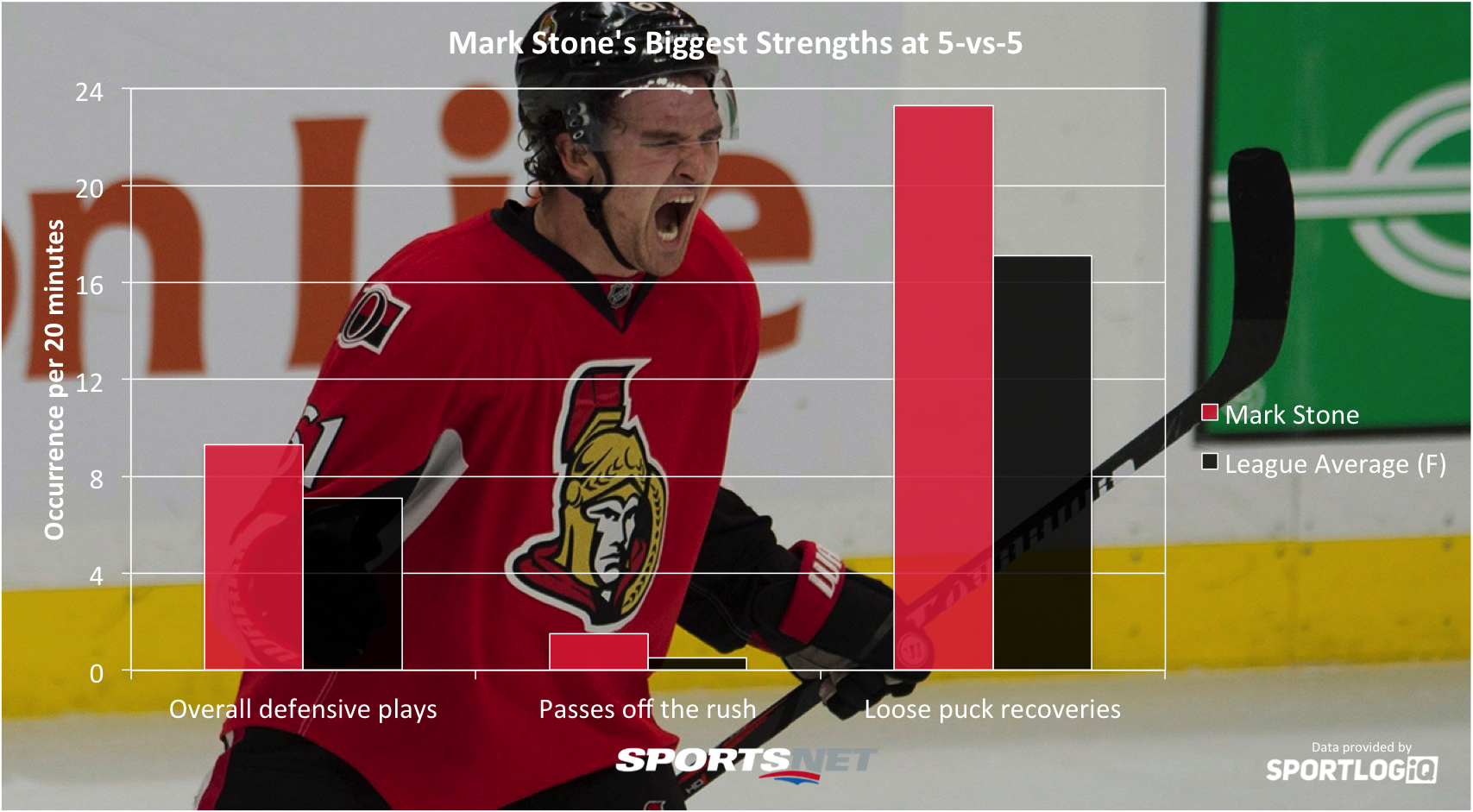
Noted mostly for his offence, Stone is a defensive stalwart on the wing, with the highest defence score among right or left wingers. No winger recovers more loose pucks and no winger strips opponents of pucks more often, a combination of dominance matched by only one other position player: Patrice Bergeron. Add Stone’s defensive ability to his potent playmaking, and you’ve got a star player in the making. If he isn’t one already.
7: Jakub Voracek | Offence: 33.17/55 | Defence: 8.05/15 | Transition: 24.49/30 | Total: 65.71/100
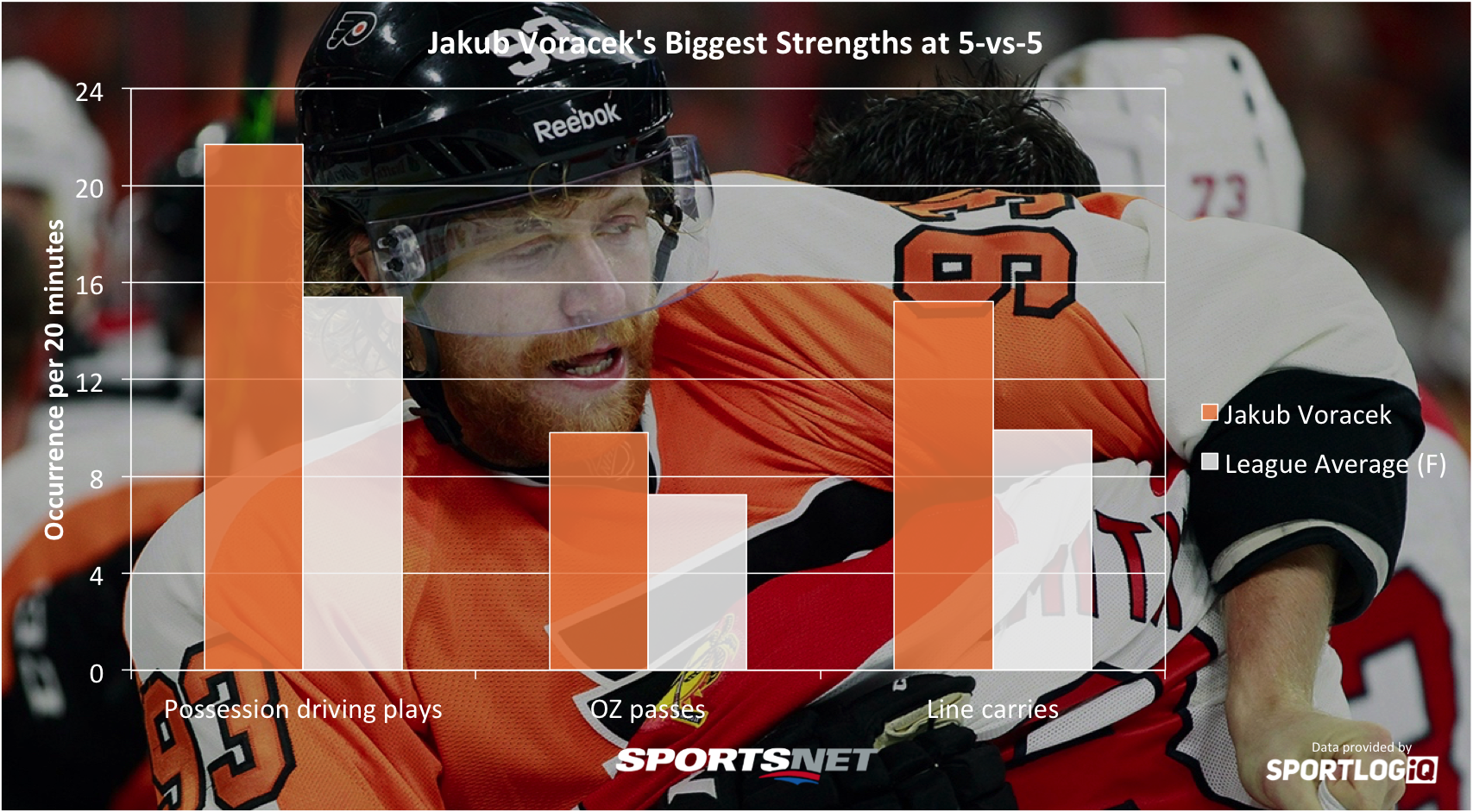
The best transition player on right wing, Voracek can carry the puck like only few can. Even if his lanes are closed off, he’s a phenomenal passer, giving him the ability to feed his teammates in transition and attack that way. Once in the offensive zone, Voracek is one of the better playmakers in the NHL, which he has to be, because he doesn’t like to shoot much. Voracek is another strong defensive player who doesn’t get much time killing penalties, so you have to wonder if there’s potential added value there.
6: Nikita Kucherov | Offence: 37.17/55 | Defence: 6.96/15 | Transition: 22.12/30 | Total: 66.26/100
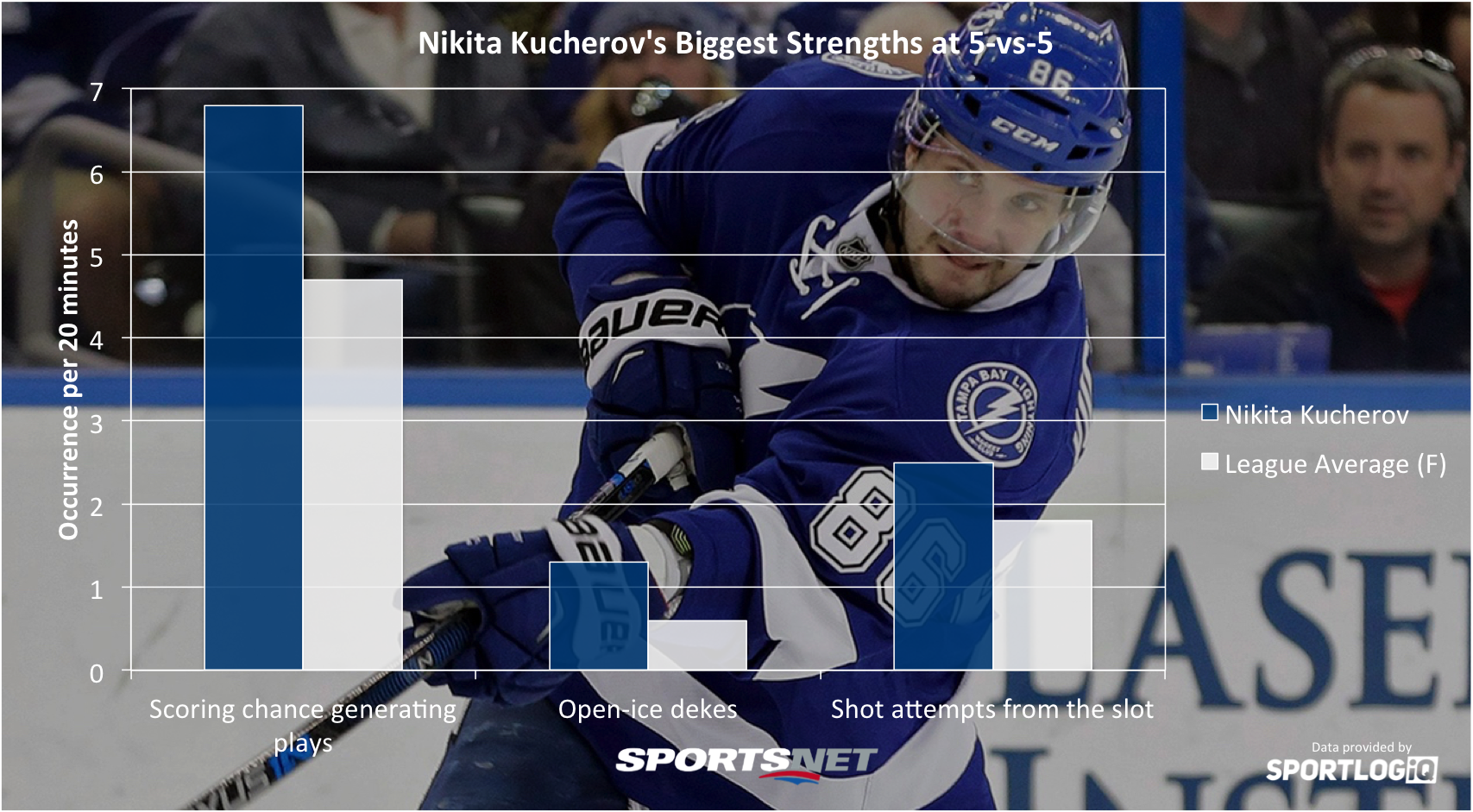
Kucherov went from a rookie with promise, to a top-line forward, to an elite goal scorer in the first three years of his career. A shifty sniper whose game is already surprisingly versatile at 23 years old, there aren’t many players in the NHL who are as potent offensively as Kucherov. He is also a strong transition player, using his skating and stick-handling ability to weave through defenders and into the offensive zone.
5: Blake Wheeler | Offence: 37.32/55 | Defence: 9.38/15 | Transition: 20.08/30 | Total: 66.78/100
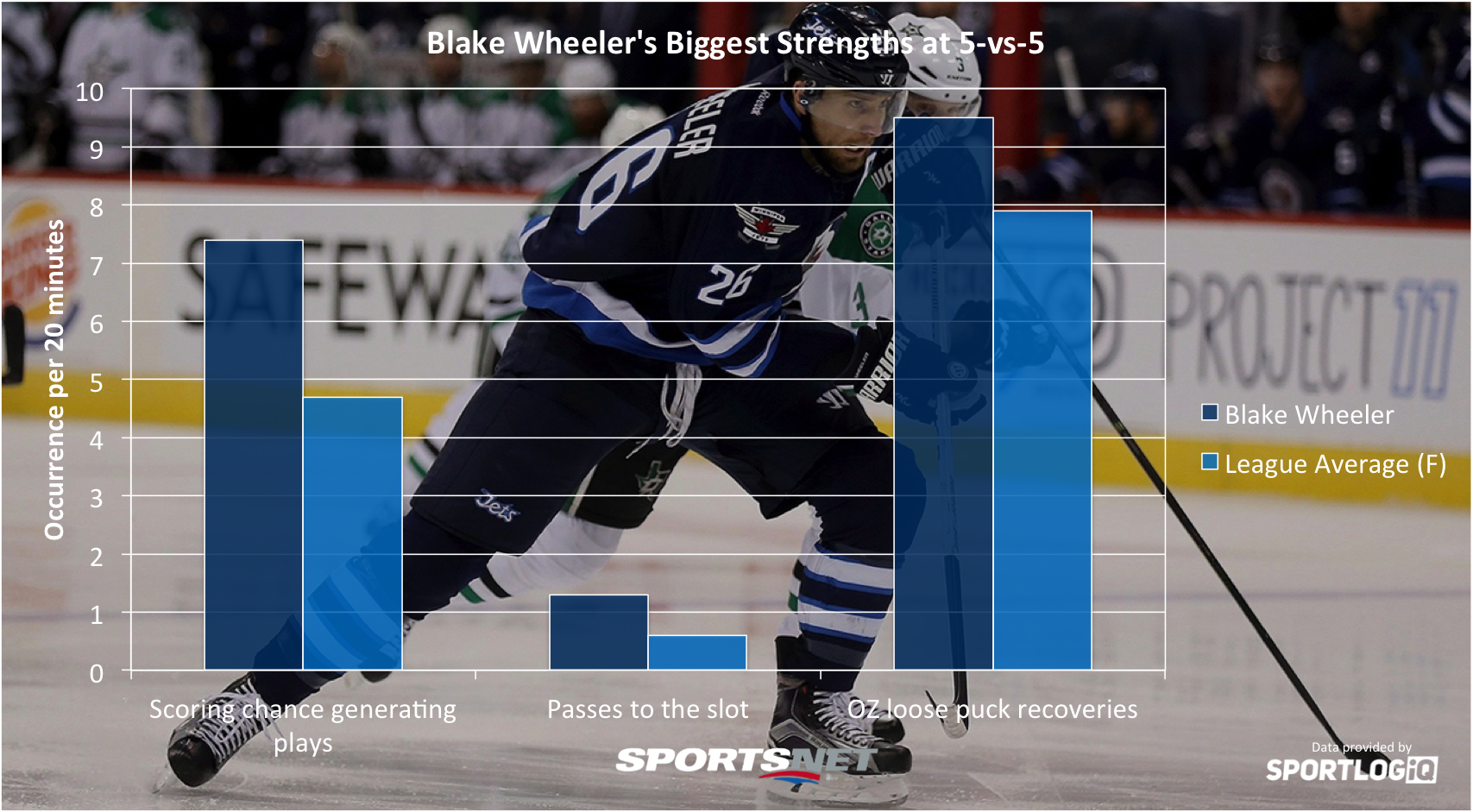
Another player who has been underrated for a long time, Wheeler has been one of the NHL’s most consistent point producers from the wing for years. He is strong with and without the puck and is one of only a handful of players who contributes to more than seven scoring chances per 20 minutes of play. He’s almost always first on loose pucks to get the play going.
4: Joe Pavelski | Offence: 37.18/55 | Defence: 9.67/15 | Transition: 22.10/30 | Total: 68.94/100

It was tough to decide where Pavelski should be placed in these rankings, but since he plays most often on the wing, I figured it would make the most sense to rank him as a winger. As such, he is one of the best all-around players at his position in the game, strong defensively and in transition, while boasting gaudy offensive numbers. Pavelski is best known as a net-front presence who converts on Joe Thornton’s passing brilliance, but also happens to be a fantastic passer in his own right.
3: Tyler Toffoli | Offence: 37.30/55 | Defence: 7.88/15 | Transition: 24.46/30 | Total: 69.64/100

Back when Toffoli was a prospect, the biggest knock on him was his skating ability, which seems absurd for a player whose biggest strength is carrying the puck. On a team that favours dumping the puck and forechecking opponents into submission, Toffoli brings finesse to the Kings, carrying the puck from defence to offence consistently and setting up shop in the slot to convert goals on the regular. Toffoli plays bigger than his 6-foot-1 frame and once he gets going, he’s hard to stop.
2: Patrick Kane | Offence: 45.18/55 | Defence: 4.06/15 | Transition: 23.08/30 | Total: 72.33/100
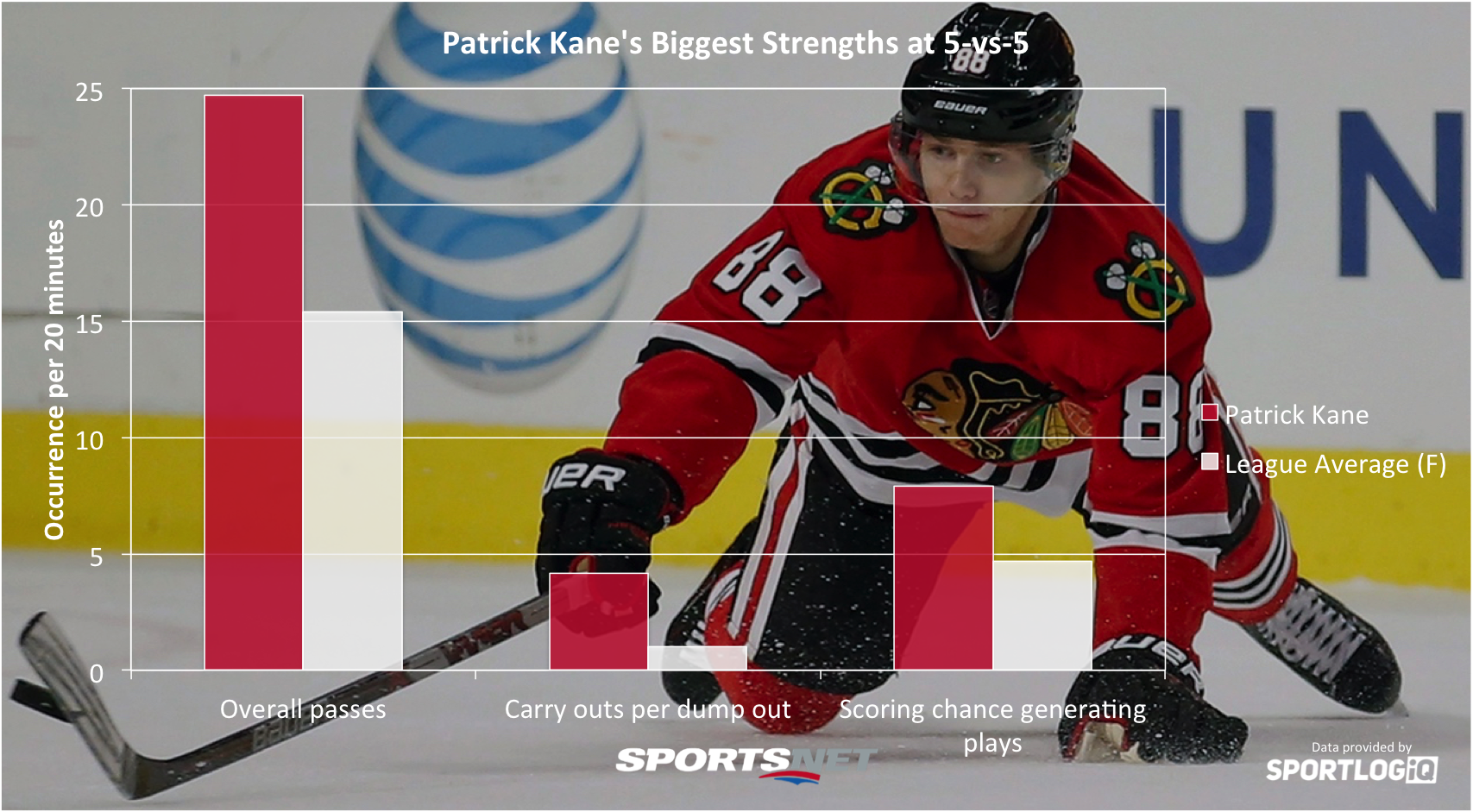
Kane is the weakest defensive player among the top-20 right wingers, but he more than makes up for it with his offensive ability, which you could probably guess since he just won his first Art Ross Trophy. Kane doesn’t get very involved in defending, but once his teammates get the puck, he makes himself available to start the transition with his uniquely strong ability to carry the puck and beat players one-on-one. Kane is one of the best passers in the game, which is the crux of his offence, although he can beat goalies from anywhere with a deceptive shot, too.
1: Vladimir Tarasenko | Offence: 46.78/55 | Defence: 5.28/15 | Transition: 22.72/30 | Total: 74.79/100

There’s really only one way to describe Tarasenko: he’s the NHL’s premier scoring-chance machine. The best goal scorers in the NHL hover around 2.5 to 3.0 scoring chances every 20 minutes at even strength, but Tarasenko sits alone at more than 4.0. He creates nearly an equal number of chances for his teammates, too, making him one of the most dangerous players in the game. Every year it seems like Tarasenko finds a way to get better, so you have to wonder how high his ceiling can get.







